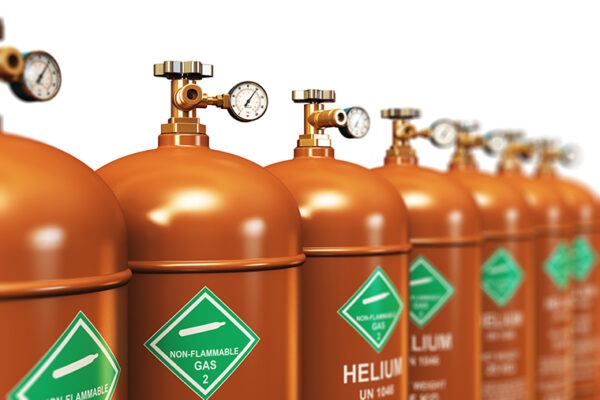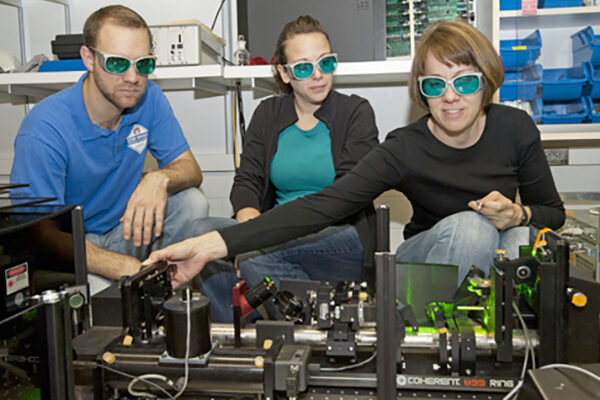Helium is not just for party balloons. It’s a valuable, non-renewable resource that is critical for many medical and research applications. And these days, helium is in short supply.
The U.S. Department of the Interior recently designated helium as one of 35 elements or minerals critical to national security and the economy. As one of the coldest substances known, the unique properties of this “endangered element” make it vital to low-temperature experiments and to sustain the special equipment that operates only at those low temperatures. Liquid helium is used to cool superconducting magnets, such as those used in certain chemistry research and also in medical diagnostics tools such as magnetic resonance imaging (MRI) machines.
Today’s helium supply problems are caused by a host of factors — as diverse as a blockade of shipments from Qatar, to pipeline maintenance issues in the United States, to U.S. markets reacting in unpredictable ways to the looming shutdown of the National Helium Reserve.

Sophia E. Hayes, professor of chemistry in Arts & Sciences at Washington University in St. Louis, has experienced helium supply challenges and rapid changes in price firsthand.
She has spoken with policy analysts who assist both the White House Office of Science and Technology Policy and members of the U.S. House of Representatives committees on Science, Space, and Technology and on Natural Resources on the global helium shortage.
On April 11, Hayes and colleague William Halperin of Northwestern University offered their perspectives as part of an American Chemistry Society webinar, Helium: An Irreplaceable Resource and Why We Must Conserve It. Some 1,400 fellow researchers registered for it.
“The two main places that we get helium are from natural gas mining and extraction from the National Helium Reserve, which is slated for closure in 2021,” Hayes said.
“We’ve heard that we have roughly a 200-year supply, at current consumption rates,” Hayes said. “That sounds pretty comforting, because 200 years sounds like a big window. But the demand for helium is also going up at 10 percent a year, roughly, worldwide [some estimate 3-4%]— in part driven by the semiconductor industry out of Asia.
“There are new international supplies being identified, in Russia and Tanzania, but I think we need to ask ourselves whether we can weather supply challenges that are tied to international sources. Helium is so critical for so many things that we do in research, and also for other uses domestically.”
“It’s not just a problem with supply, it’s also the price over time,” Hayes said. “Over the short period of time from about 2009 to 2015, helium prices went up dramatically, anywhere from about 350 to 400 percent.”
“In such a short period of time and on fixed budgets — it’s almost impossible to absorb that kind of cost increase if you are a researcher,” she said.
To help address these issues, the American Physical Society, in partnership with the Materials Research Society and the American Chemical Society, issued a report in October 2016 that identified federal steps necessary to save entire fields of research that are in peril with rising helium prices.
Two and a half years on, many researchers continue to suffer from the rising costs of liquid helium and its unreliable availability.
“This will require congressional action,” Hayes said. She is also strongly encouraging researchers to implement infrastructure improvements to recycle helium — for example, by co-locating helium-using equipment and using helium recovery systems to capture the gas. Hayes also advocates for new research funding to develop helium-free equipment for NMR and MRI, using new materials such as high-temperature superconductors.
Congressional action is what has sustained the national helium reserve since its founding in 1925, to assist not only scientific research but use as a coolant in the space race and Cold War. Already, balloon businesses have felt a crimp, showing that helium shortages have a long reach beyond the laboratory.




